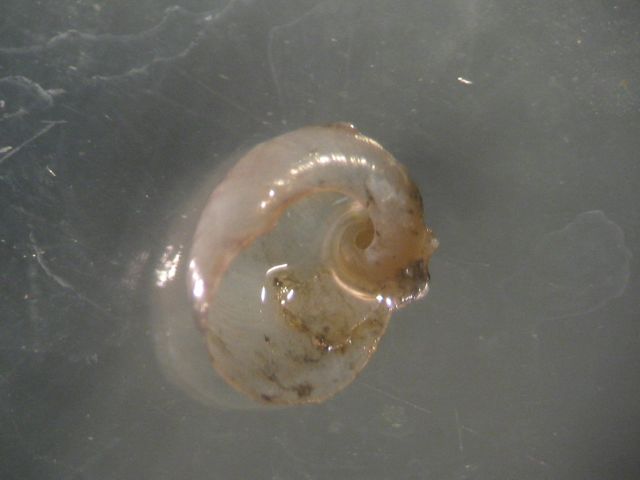
Fish eat the darndest things – this baby abalone shell no bigger than your pinky nail came from a gopher rockfish stomach. Can’t imagine it was all that satisfying…
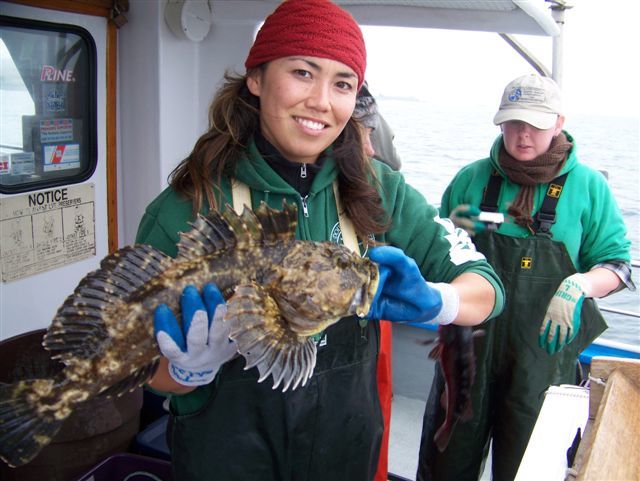
Ichthyology student Jahnava Duryea shows off a fine-looking specimen of cabezon (Scorpaenichthys marmoratus) during fish tagging surveys of Central California’s marine protected areas with the California Collaborative Fisheries Research Program. Cabezon are the largest members of the sculpin family, dwarfing their cousin sculpins that can fit in the palm of your hand. What punks.
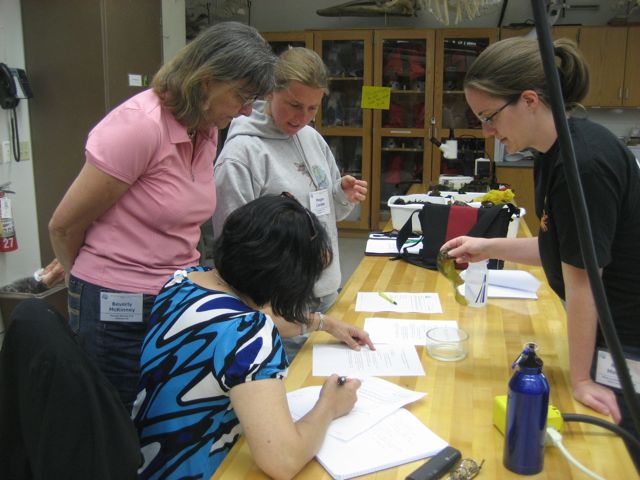
Invertebrate zoology student Kristin Meagher (right) helps middle and high school science teachers identify seaweeds using a dichotomous key (you know, one of those “If it’s green, go to step 2, if it’s another color go to step 3” kind of deals – kind of like a choose your own adventure story for scientists). Kristin is a teaching assistant for MLML’s Teacher Enhancement Program, and was helping with a summer workshop that introduces middle and high schools science teachers to marine-related lab and field activities they can incorporate into their curricula.
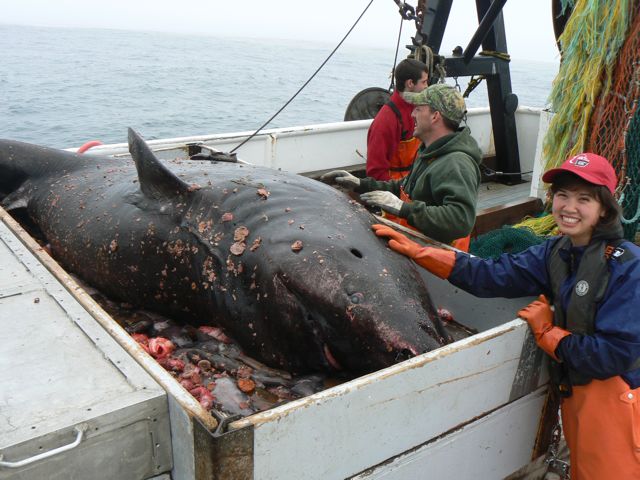
There are fewer rude awakenings for a sleepy Pacific Sleeper Shark than to get hauled up in a net during a government fishing survey. But for fish biologists, it’s an incredible opportunity to get a photo with the “big one!” Ichthyology student Erin Loury poses with the unexpected catch while volunteering with the National Marine Fisheries Service groundfish survey as part of a partnership with MLML’s Pacific Shark Research Center. Don’t worry, the shark was released alive – but probably a little grumpy.

In order to understand how ocean conditions affect fish populations, researchers need to know something about the state of the water when they count fish. Dr. Rick Starr (left) and Ichthyology student Katie Schmidt are getting ready to test the ocean temperature and clarity as part of fishing surveys with the California Collaborative Fisheries Research Program. Dr. Starr is holding a white sensor that records the temperature of the water as it is lowered from the surface.
In Katie’s hand is a secchi disc, an extremely high tech instrument that oceanographers have been using to determine water clarity since Pietro Angelo Secchi invented it in 1865. The disc is lowered until it is no longer visible from above the water, and the point at which it disappears is the Secchi depth. It’s cheap, simple and if it ain’t broke…
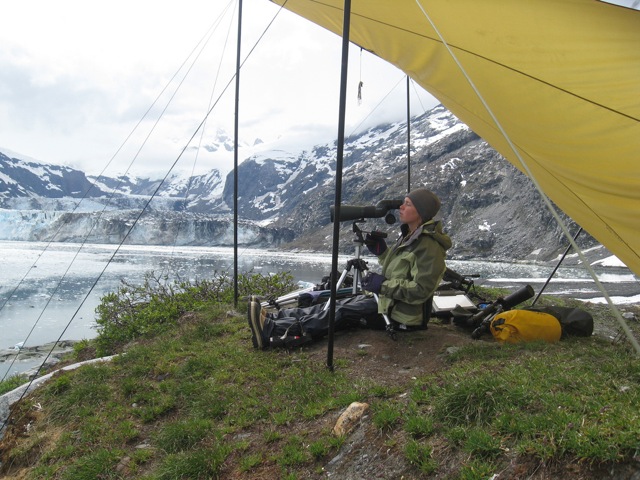
by Colleen Young, Vertebrate Ecology Lab
In my last post I told you about the findings of my thesis research on the effects of vessels on harbor seals (that cruise ships caused the most disturbance of all vessels), but then left you hanging about what the findings mean and why anyone should care. So now that you’ve had a chance to think about it, what do you think?
Well, finding that cruise ships accounted for a greater incidence of flushing (when seals leave the ice and hit the water) was not what I expected, based on previous studies, which found that kayaks and canoes (non-motorized vessels) caused greater disturbance. However, these previous studies were conducted at terrestrial haulout sites, where the water depth near the harbor seals is extremely shallow, making it easy for non-motorized vessels to get close to seals, and difficult for motorized vessels.
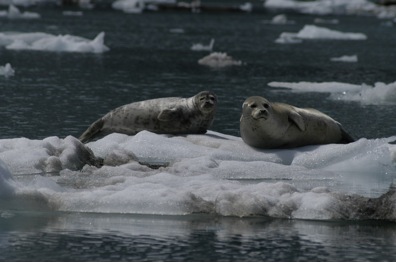
In Johns Hopkins Inlet, however, seals haul out on floating icebergs in a deep fjord, so motorized vessels can get very close to seals, whereas kayaks stay more distant. Therefore, the differences between reactions of seals to different vessel types may actually be a response to how close the vessels approach. I tried teasing apart the effect of vessel distance on harbor seal behavior, but that proved less straightforward than I anticipated. That’s because, like humans, harbor seals have individual personalities, meaning that they respond differently to approaching vessels, making their behaviors difficult to predict.
So harbor seals are disturbed by cruise ships and motorized vessels more than kayaks. So what? Well, harbor seals numbers in Johns Hopkins Inlet have been decreasing since 1992. In contrast, cruise ship numbers in Glacier Bay National Park have increased, meaning the potential for disturbance is greater than ever before. Harbor seals are top-level predators, so they exert great influence over marine ecosystems through the food chain. Therefore, it is important to protect harbor seals, including reducing disturbance, in order to maintain a healthy ecosystem in Glacier Bay.
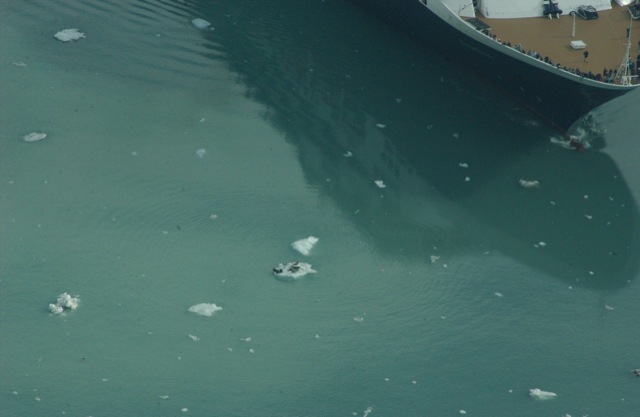
I made some recommendations to the resource managers at Glacier Bay National Park about how they could reduce disturbance to harbor seals by cruise ships. I recommended that they teach boaters about how to avoid disturbing harbor seals by keeping a good distance and not approaching seals head-on. I also recommended that they limit the number of motorized vessels allowed to enter Johns Hopkins Inlet, and have disciplinary action for boaters who disturb seals.
I was able to voice my recommendations to the park superintendent and other important decision-making people at a special conference. It felt really good to know that the people who have the authority to protect these harbor seals wanted to hear what I had to say and were interested in implementing many of my suggestions. I hope to go back to Glacier Bay some day to see how the harbor seals are doing.
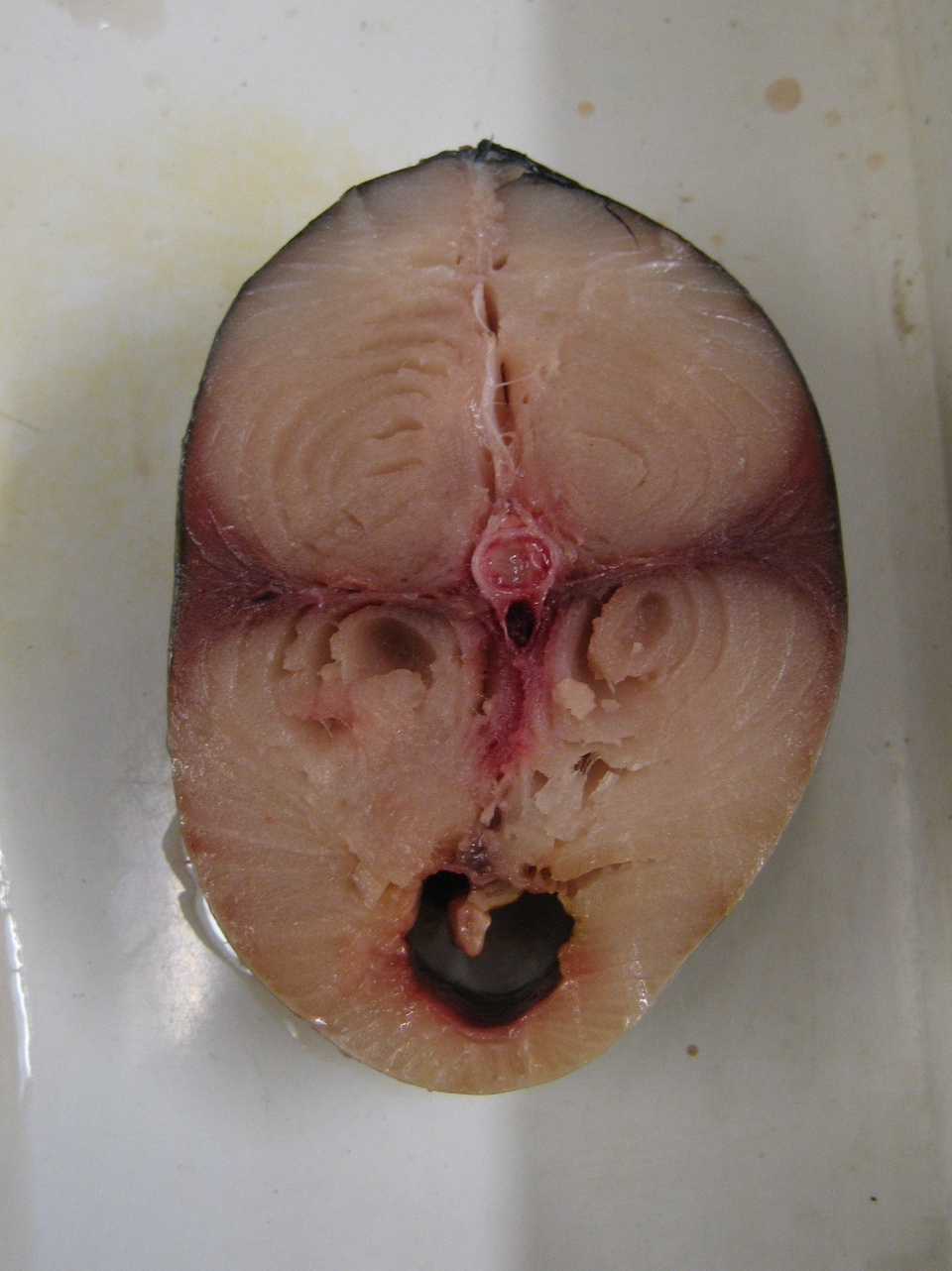
If you slice into a tuna like we did in Ichthyology class, here is what you’ll see: a layer of red muscle sandwiched between white muscle (which looks pink in this photo). The oxygen-rich red muscle helps tunas power through the water. Having red muscle located near the core of their body makes tunas unique from many other fishes, and allows them to keep their muscle at a higher temperature than the surrounding water. Warmer muscle means faster contractions and increased power. No wonder tunas are some hot-blooded fish!
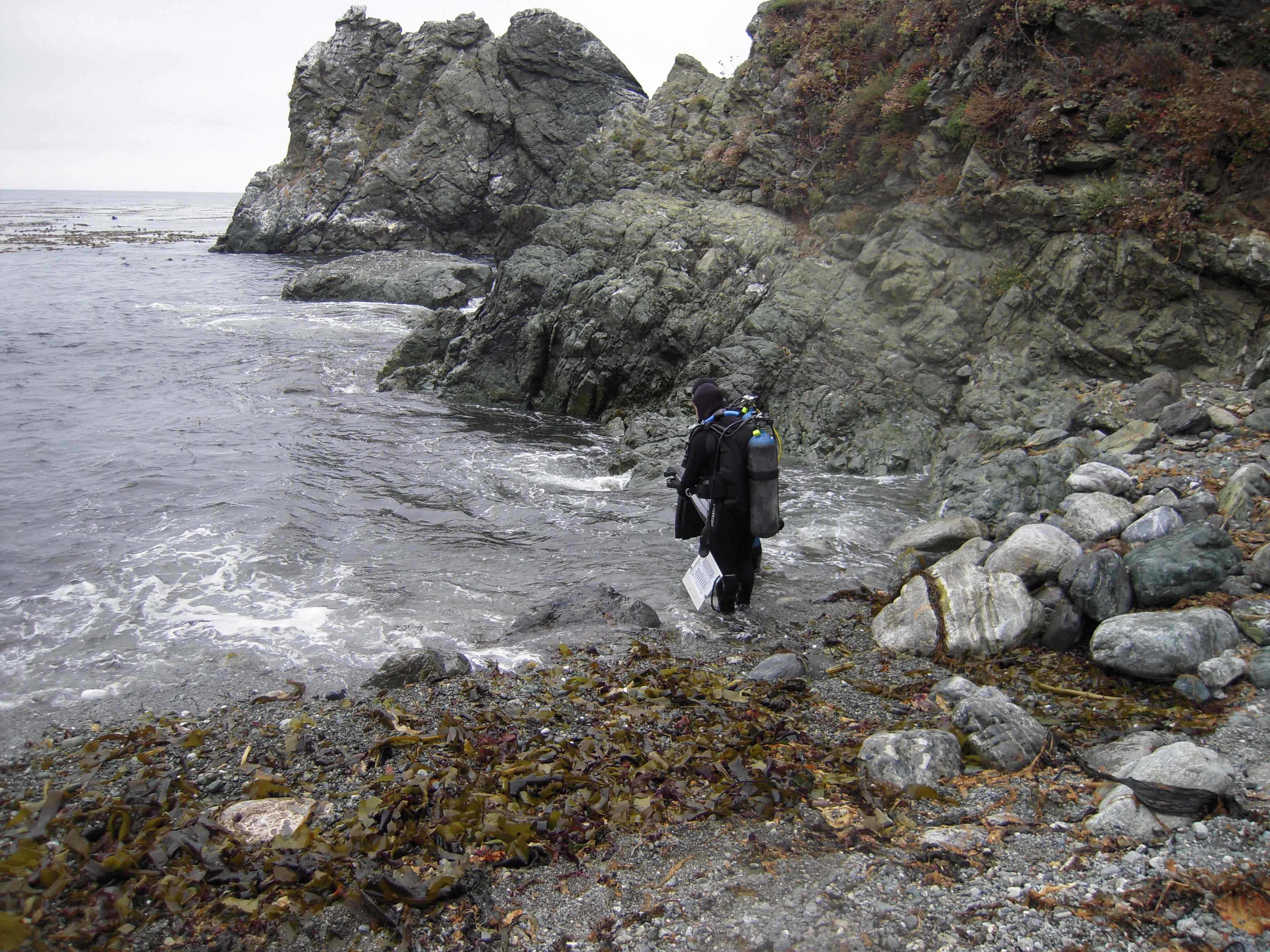
MLML scientific divers wait for a break between the sets of waves before wading into the water. Diving from shore at Big Creek Reserve can be tricky, considering all of the big boulders between divers and open water. With a little patience and sure footing, you can venture out for a gorgeous day under the sea.